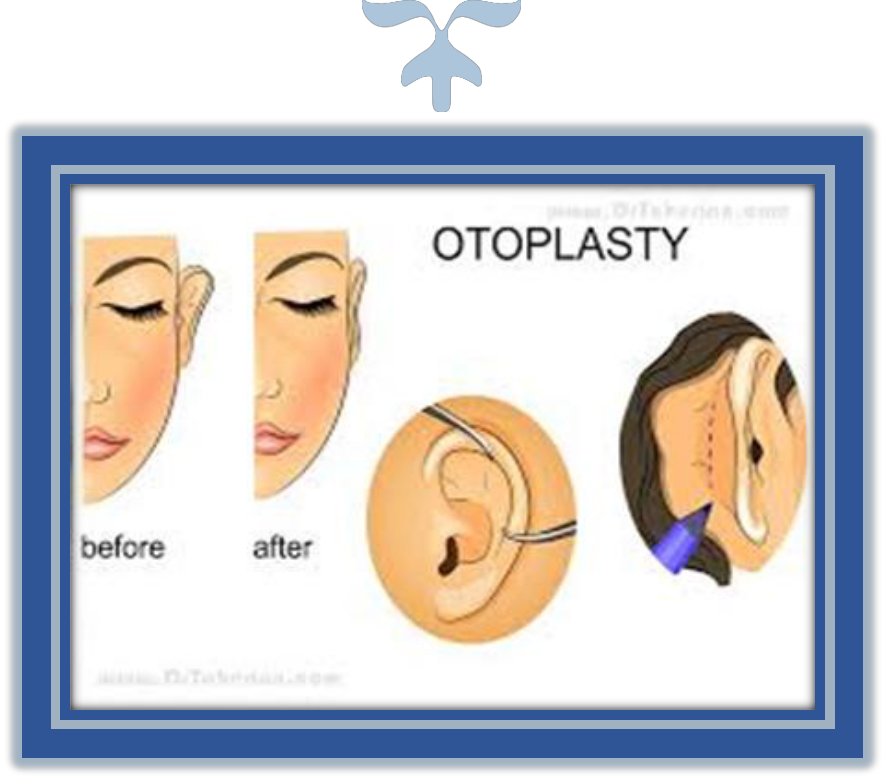OTOPLASTY
Table of Contents
Should this Procedure get done?
Points to know before Otoplasty
Surgery; Pre-Operative, During & Post-Operative
OTOPLASTY
Introduction:
Aesthetic appearance is very important for building confidence and evolving as a bold personality. There is a possibility of not having once desired features which might be due to any reason such as congenital, injury, or any trauma. People can face bullying and tease from surrounding people at an early age of life which hinders him to come out as a confident individual rather than timid and low self-esteem.
With the advancement of modern surgical techniques, cosmetic and reconstructive surgeries have overcome aesthetic deformities to get corrected with all possible best outcomes. There are numerous plastic surgeries out there, but predominantly in this article, you will get all your answers about otoplasty.
What is Otoplasty?
Otoplasty or Pinnaplasty is one of the reconstructive or cosmetic surgery which is performed to reshape the prominent or protruding ears under local anesthesia. It is accomplished by Plastic Surgeon to improve the aesthetic appearance by pinning back the ear cartilage, fixing the ears back closer to the side of the head, ultimately improve the overall aspect.
Prominent ears seem to appear within a few weeks of birth. These can be corrected at the early age of life until the age of 6 months as the cartilage of newborns is flexible and can easily be molded by using splint which helps to achieve ears permanently pushed back. After the mentioned age, cartilage is no more flaccid enough and needs reconstructive surgery to stretch stiff cartilage back to the normal state. It is recommended to choose a surgical solution after the age of 5 years for the best outcome as one is under the growing stage until then.
Goal:
The main purpose of reshaping the ear is to reinstitute the prominent ears to improve the overall appearance. Fear of teasing and bullying in school, from workplace or friends circle does not allow to be upfront in daily life activities. Therefore, to avoid any such embarrassment one should consult to Plastic Surgeon and get the reconstructive surgery done to correct misshapen ears.
Should this Procedure get done?
The outer ear is not involved in the hearing mechanism. Prominent ears cause a psychological disturbance in individuals and cause interference to hang out with friends due to low self-esteem.
One should not bear the oppressive behavior of society, and not let others influence psychologically as he is not responsible for his physical features.
Points to know before Otoplasty:
Some important things to keep in mind when one consider otoplasty:
- Surgery is performed on both ears for better balance even if one ear is protruding.
- The symmetry of both ears may differ slightly after otoplasty, as natural ears also have a slight difference when observing closely.
- It is a cosmetic procedure which is usually expensive. Ask your surgeon for any out-of-pocket cost and make sure you can bear it.
Talk to your parents, discuss your problem as it could help to relieve stress and help to get better results.
Risks:
People undergoing any kind of surgical procedure, they always have possible risks to including:
- Bleeding
- Allergic reaction to anesthesia
- Infection at the cut site if not properly cleaned.
- These problems can prolong the recovery period.
You should consult for likely of these risks and complications and how they could be avoided.
Surgery; Pre-Operative, During & Post- Operative Overview:
Pre-Operative Requirements:
It is a minor surgery and does not possess any complications.
The patient should have a physically strong & mentally relaxing state of mind.
Some tests like CBC is performed.
Surgery Requirements:
It is performed with intravenous sedation supplemented with local anesthesia. In children, general anesthesia may be used.
The ear is corrected by making an incision behind the ear, stitches are used by using mastoid bone to make ears permanently stick back towards the head.
The procedure lasts for almost 1.5 to 2 hours.
There is a localized scar behind the ear which fades away over the 6 to 12 months.
Post-Operative Requirements:
After surgery, the bandage is applied around the head to ear to provide support for two to three days.
Followed by the bandage, a headband is used for months especially at night to prevent any regression or irritation during sleep.
It is recommended to take a shower after 2 to 3 days.
Patients should avoid activities that could cause trauma or injury to ears during the recovery period.
After 7 to 10 days: The bandage (if used) and stitches are removed (unless they’re dissolvable stitches).
After 1 to 2 weeks: Most children can return to school.
After 4 to 6 weeks: Swimming should be OK.
Around 12 weeks: Contact sports should be OK.
Following Otoplasty, the patient might feel:
- Post-operative swelling or discomfort can occur after surgery,
- Numbness may continue for several weeks
- Mild bruising may be present for up to 2 weeks.
- The ears may feel stiff for several months.
- Soreness, particularly at night, can last for a few months.
Self-care after Otoplasty:
Post-operative care instructions must be properly followed for quick healing:
- Properly take care surgical site post-operatively.
- Topical ointment or cream as prescribed by your doctor should be properly applied for recovery.
- Oral medications to aid in the healing process and to reduce the risk of infection.
- Properly follow up on the suggestions as your doctor consult.
- Wear bandages for the first two to three days followed by wearing a headband for months.
- Report any bleeding, severe pain, or any unusual symptom to your surgeon.
On A Lighter Note:
Nowadays mental problems have very serious effects and might lead to suicidal thoughts due to unavoidable problems of life. Amidst all the chaos of daily life issues, feeling of insecurity and being felt of looking ugly in this digital world would take the mental condition of individual to another level. If one is not feeling good over anything, he should talk immediately to parents and likewise, parents should invest their enough time and attention in understanding what their child is going through and provide proper counselling. By sharing thoughts and attentive conversations, half of the problems are solved and one feel relieved by the moral support from his loved ones.
References:
(British Association of Aesthetic Plastic Surgeons.)
(British Association of Plastic, Reconstructive, and Aesthetic Surgeons.)






